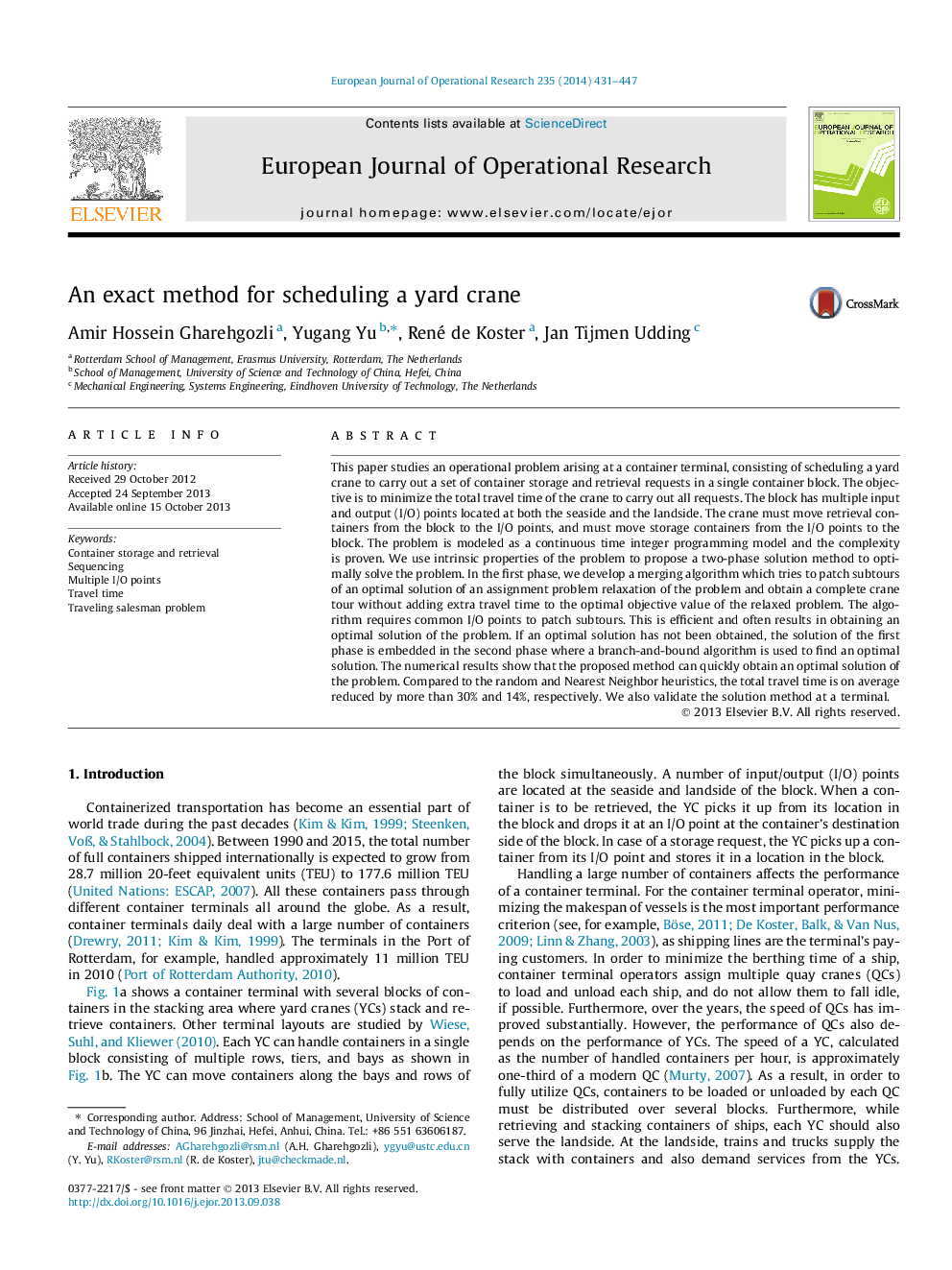| Article ID | Journal | Published Year | Pages | File Type |
|---|---|---|---|---|
| 479779 | European Journal of Operational Research | 2014 | 17 Pages |
•We study sequencing container storage and retrieval requests in a container terminal.•We minimize the total travel time of a yard crane to handle requests in a block.•We model the problem as a continuous time integer model and prove the complexity.•We propose a two-phase solution method to quickly and optimally solve the problem.•Our method reduces the travel time by 30% and 14% compared to random and NN heuristics.
This paper studies an operational problem arising at a container terminal, consisting of scheduling a yard crane to carry out a set of container storage and retrieval requests in a single container block. The objective is to minimize the total travel time of the crane to carry out all requests. The block has multiple input and output (I/O) points located at both the seaside and the landside. The crane must move retrieval containers from the block to the I/O points, and must move storage containers from the I/O points to the block. The problem is modeled as a continuous time integer programming model and the complexity is proven. We use intrinsic properties of the problem to propose a two-phase solution method to optimally solve the problem. In the first phase, we develop a merging algorithm which tries to patch subtours of an optimal solution of an assignment problem relaxation of the problem and obtain a complete crane tour without adding extra travel time to the optimal objective value of the relaxed problem. The algorithm requires common I/O points to patch subtours. This is efficient and often results in obtaining an optimal solution of the problem. If an optimal solution has not been obtained, the solution of the first phase is embedded in the second phase where a branch-and-bound algorithm is used to find an optimal solution. The numerical results show that the proposed method can quickly obtain an optimal solution of the problem. Compared to the random and Nearest Neighbor heuristics, the total travel time is on average reduced by more than 30% and 14%, respectively. We also validate the solution method at a terminal.
